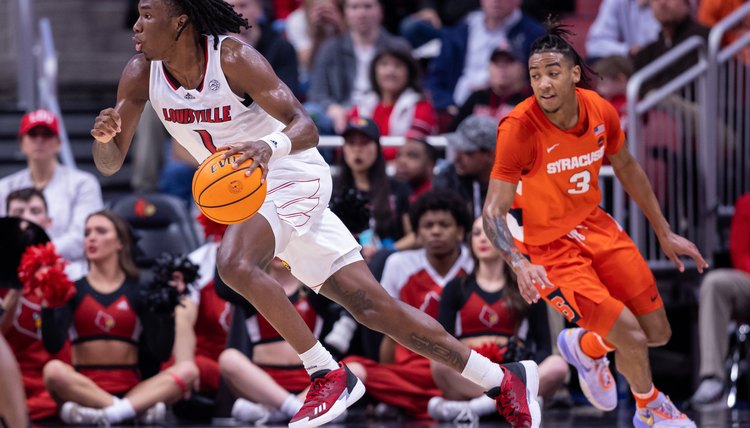The Average Score of College Basketball Games

While all college basketball scores are known as being unpredictable, calculating the average score in both Men’s and Women’s NCAA Division I games offer some insight into what final scores may look like.
Scoring average for NCAA DI Men’s and Women’s basketball:
- Men: around 67.875 points per game
- Women: around 60.937 points per game
*These figures are calculated by adding 16 teams’ point totals together on a particular night and dividing that number by 16.
Predicting final scores of men’s basketball games is especially relevant during March Madness, where millions of people fill out a bracket and compete each year to see who can be the most accurate. In many NCAA tournament brackets, people predict the final score for the National Championship game, which is where knowing the average score of college basketball games comes into play.
These averages don’t always help, however. Like the title of this article stated, these are averages. That means there are outliers. For example, not many average scores would have helped predict any of the following upsets in college basketball:
- UMBC (16) defeats Virginia (1) 74-54, becoming the first college basketball team ranked No. 16 to defeat the No. 1 seed in the NCAA tournament
- Stephen F. Austin defeats Duke 85-83 to end their 150-game home win streak
- Richmond (15) defeats (2) Syracuse 73-69
- St. Peter’s (15) defeats Kentucky (2) 85-79
- Eastern Illinois (+32.5) defeats Iowa 92-83
- Canisius 79, NC State 78 in 4OT
- Penn 72 (9), UNC (North Carolina–1) 71 to advance to the Final Four
- Duke 79, UNLV 77 in the Final Four
- VCU (11) 71, Kansas (1) 61
Because rankings often fly out the door come tournament time in March, these upsets do happen more than you would expect, which makes it all the more difficult to try and predict final scores in men’s college basketball. NFL and college football scores are a bit easier simply because of the scoring mechanisms; but nonetheless, predicting any score is a difficult task for even the most analytical folks.

NCAA basketball games are generally lower scoring than NBA games for the following reasons:
1. Game Length and Personal Fouls
- NCAA Men’s Division I games consist of two halves, each 20 minutes long; NBA games consist of four quarters, each 12 minutes long
- NCAA Men’s Division I games allow players five personal fouls before disqualification; NBA games allow six personal fouls before disqualification
2. Team Play and Shot Clock
- College basketball games emphasize more team play, with assists and ball movement being more widespread
- NBA games focus more on one-on-one matchups, and coaches often design plays to showcase their players’ abilities
- College basketball uses a 30-second shot clock; the NBA uses a 24-second shot clock
3. Athletic Skill
College basketball players are younger and more prone to miss things like free throws and easy two-point field goals simply because they do not have as many reps as somebody who is experienced in the NBA.
Younger players also tend to commit more turnovers, which gives teams less FGA’s (field goals attempted), simply because they have less scoring opportunities on offense.
NBA players are older and more consistent with their shooting of things like free throws and three-pointers, and do not have things like school that would prevent them from working on their game at any time.
4. Defensive Rules
The NCAA has no limits on what type of zone defense can be played, making scoring more difficult; in the NBA, players can only stay in the lane for three seconds at a time, opening the path to the lane and creating more shot opportunities for offensive players.
References
Resources
Writer Bio
Wade Harle began writing professionally in 2011 and holds a bachelor's degree in journalism from Iowa State University. His work on sports and other topics has been published on various websites.
